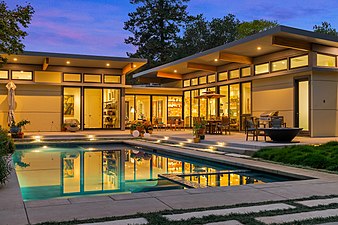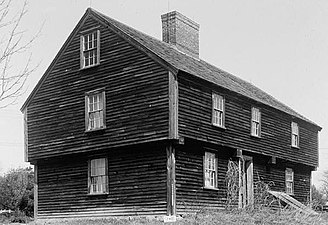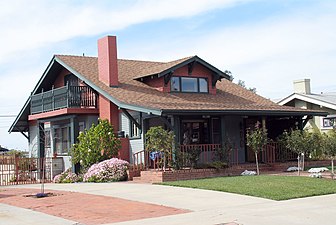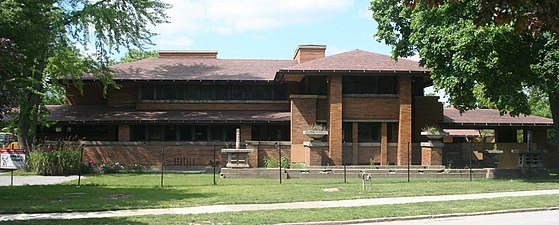Overhang (architecture)

In
History
In late-medieval and Renaissance Europe, the upper stories of timber-framed houses often overhung the story below, the overhang being called a "jetty". This technique declined by the beginning of the 18th century as building with brick or stone became common.[3]
By the 17th century, overhangs were one of the most common features of American colonial architecture in New England and Connecticut. This style featured an overhanging or jettied second story, which usually ran across the front of the house or sometimes around it; these dwellings were known as garrison houses. In the early 20th century, the style was adopted by Prairie School architecture and architects like Frank Lloyd Wright,[4] thus making its way into modern architecture.[5][6] An overhang may also refer to an awning or other protective elements.
Gallery
-
A contemporary home in Glen Ellen California exemplifying the practice of Indoor-Outdoor Living design through an elongated overhang. Builder: Stillwater Dwellings.
-
Overhang of the Diwan-e-khas (Hall of private audience, Fatehpur Sikri, built 1570s, Mughal architecture.
-
The late 17th century McIntire Garrison House in York, Maine.
-
Overhangs of theIndo-Saracenicarchitecture, 1894.
-
Emmental farmhouse with overhang reaching the ground, Switzerland.
-
Overhangs of the Harold C. Bradley House, Madison, WI, byPrairie School architecture.
-
Deeply overhangingSan Diego, California, late 19th century.
-
Bauhaus architecture.
-
The Concourse, Singapore, featuring prominent overhangs, 1994.
See also
Where eaves continue in the same plane over an
References
- ISBN 0-87413-399-8.
- ISBN 978-0-8048-3838-2.
- ^ The History and Construction of Medieval Timber-Framed Houses in England and Wales - Page 4: Developments, Jettying
- ISBN 3-8228-1162-9.
- ISBN 0-486-25492-5.
- ISBN 0-486-21136-3.
Overhang in architecture.











